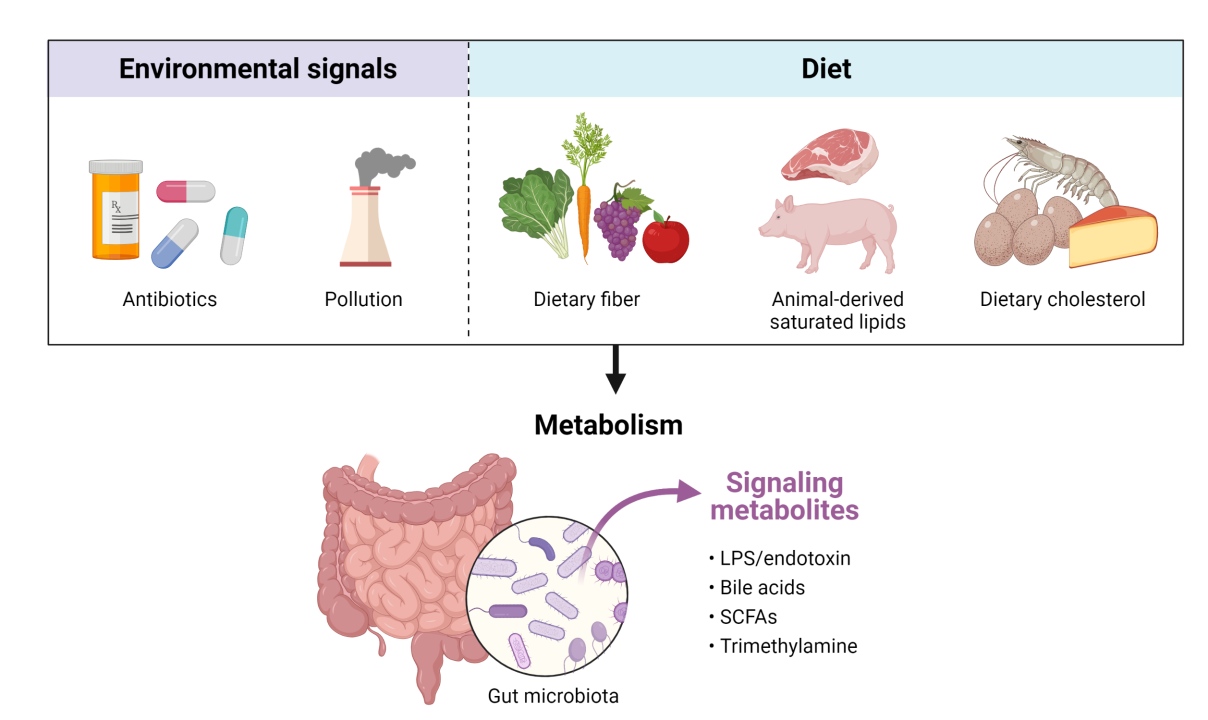
Gut Microbiota and Nutrition
Introduction
Gut microbiome, also described as gut microbiota, or gut flora, denotes an array of microbes comprising of numerous bacterial, archaeal, viral, protozoan, and fungal species that live as symbionts in the human gut (Moszak et al, 2020). Gut microbiota constitutes the metagenomic representation of the gastrointestinal tract (Segata et al, 2013). This human-microbe symbiosis is established within two years after birth and is either mutualistic or commensalistic. The configuration of the human gut microbiota is moreover specific, delicate, and prone to fluctuations brought about by age, diet, and health conditions (Quigley, 2013). The benefits to the host from gut microbiota include the synthesis of vital vitamins like B and K, conversion of dietary fibers into fatty acids, and protection from inflammation and pathogenic infection (Sherwood et al, 2013).
The Gut Ecology
The human gut can be described as an eco-system with an intriguing diversity of the microbial population. Though the density of the microbial composition varies with the locations along the gut, the diversity of the gut microflora can be labeled as far higher than any other known habitat (Guarner, Malagelada, 2003). The colon exhibits the highest density and species diversity as compared to the stomach and small intestine (Sears, Cynthia 2005).
The Gut Bacteriome
Of all the microbiota in the gut, the bacterial species have been the most studied and predominant. The bacterial biota is referred to as bacteriome and is grouped as those in the stomach and the intestine. Though the estimated gut bacterial diversity is estimated to stretch from 300 to 1000 species, most of them are yet to be elucidated comprehensively (Shanahan, 2002, Sears, Cynthia 2005). This scientific lag is due to the absence of a laboratory culture protocol for the bacteria present in the gut. Yet, numerous gut bacteria have been identified with an established metabolic role and many of them fall into a class of about thirty to forty species (Beaugerie et al, 2004).
Though almost ninety-nine percent of the gut bacterial biota are anaerobic, quite high densities of aerobic species have been isolated from the caecum.
The highly acidic environment of the stomach is of course hostile and pitches a grim challenge to the establishment of a microbial population. Yet, various species of Streptococci, Staphylococci, Lactobacilli, Peptostreptococci have been identified in the stomach.
The small intestine harbors a scanty population of microbes perhaps due to the propinquity with the stomach with gram-positive bacilliary and coccal forms. The far end of the small intestine on the other hand is a rich reservoir of gram-negative forms predominantly of the Enterobacteriaceae family supported by an alkaline environment.
The large intestine, especially the colon is principally dominated by bacterial flora that includes obligate anaerobes such as Bifidobacterium and Bacteroides. Recent research studies have elucidated a niche dominance of five phyla of bacteria in the intestine, namely, the Bacteroidetes, Firmicutes, Actinobacteria, Proteobacteria, and Verrucomicrobia, of which, the Bacteroidetes and Firmicutes account for about ninety percent (Khanna et al, 2004). Faecalibacterium prausnitzii of the phylum Firmicutes is a well-known inhabitant of a healthy adult intestine (Miquel, 2013 and Braune, 2016). The other predominant genera include Eubacterium, Ruminococcus, Peptococcus, Peptostreptococcus, Bacteroides, Clostridium, Faecalibacterium, and Bifidobacterium apart from Escherichia and Lactobacillus (Adams, Moss, 2007).
Dr. Animesh Acharjee, PhD
Senior Scientist, University of Birmingham
Institute of Translational Medicine
University Hospitals Birmingham NHS Foundation Trust
Birmingham, UK

Freelance Consultant in Data Analytics
2yDear Animesh, Feel lucky to be an element in your network. Great indeed that you have started to communicate on these subjects of vital interest and stakes to us. Moreover, It was in such simple prose that even the ordinary men like me get to benefit. Thank you very much .
Instructor Translational Molecular Pathology MD Anderson Cancer Center
2yNice Animesh Acharjee, there is some recent literature linking the microbiome with tumour development. Mainly a play of resource consumption/generation that's basically an ecosystem. Quite an interesting topic to exploit eco ideas on niche exploitation, environmental dynamics and evolution ;)